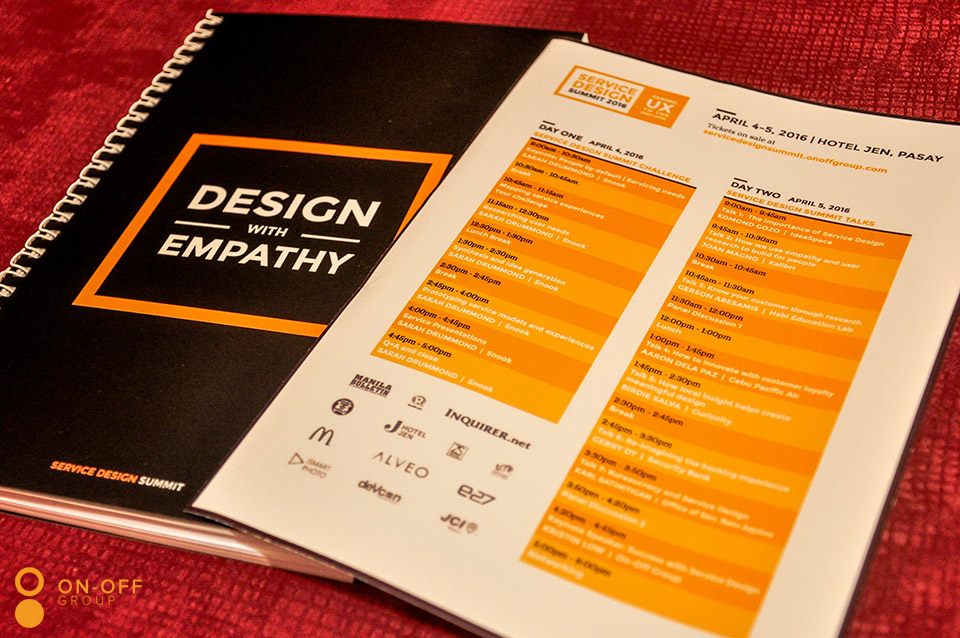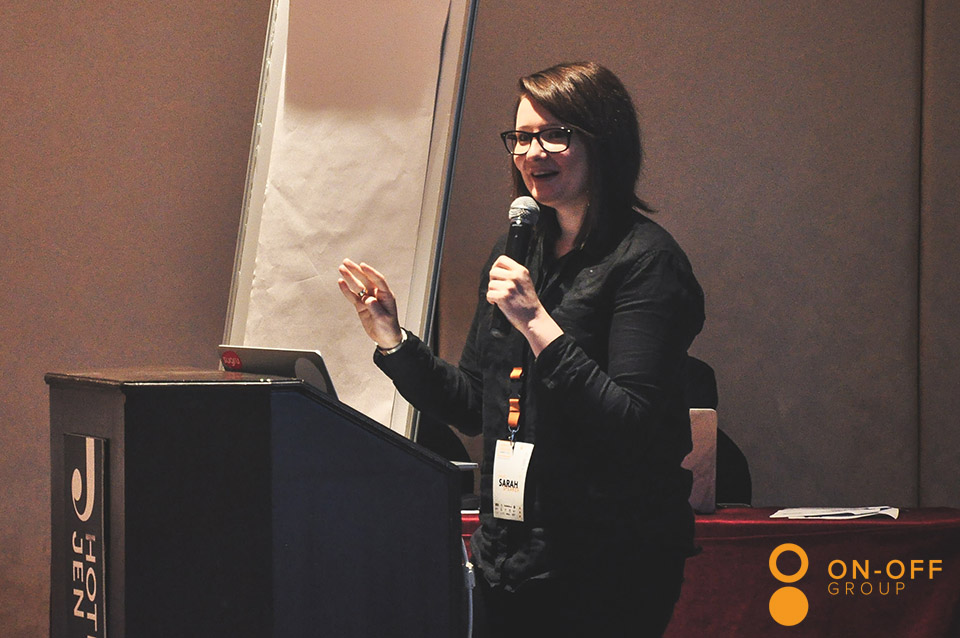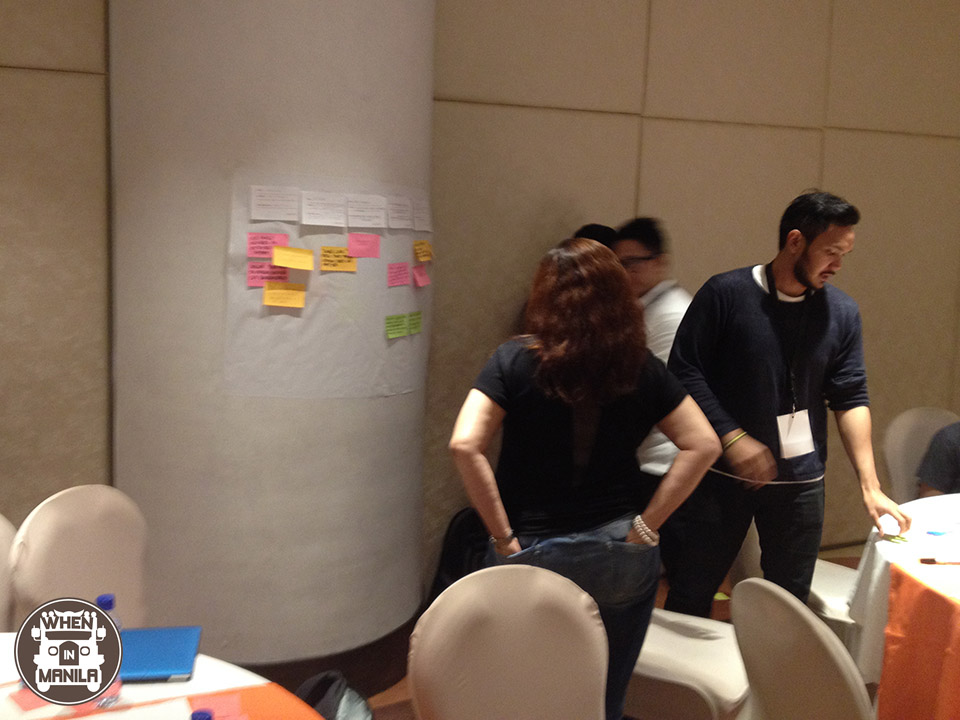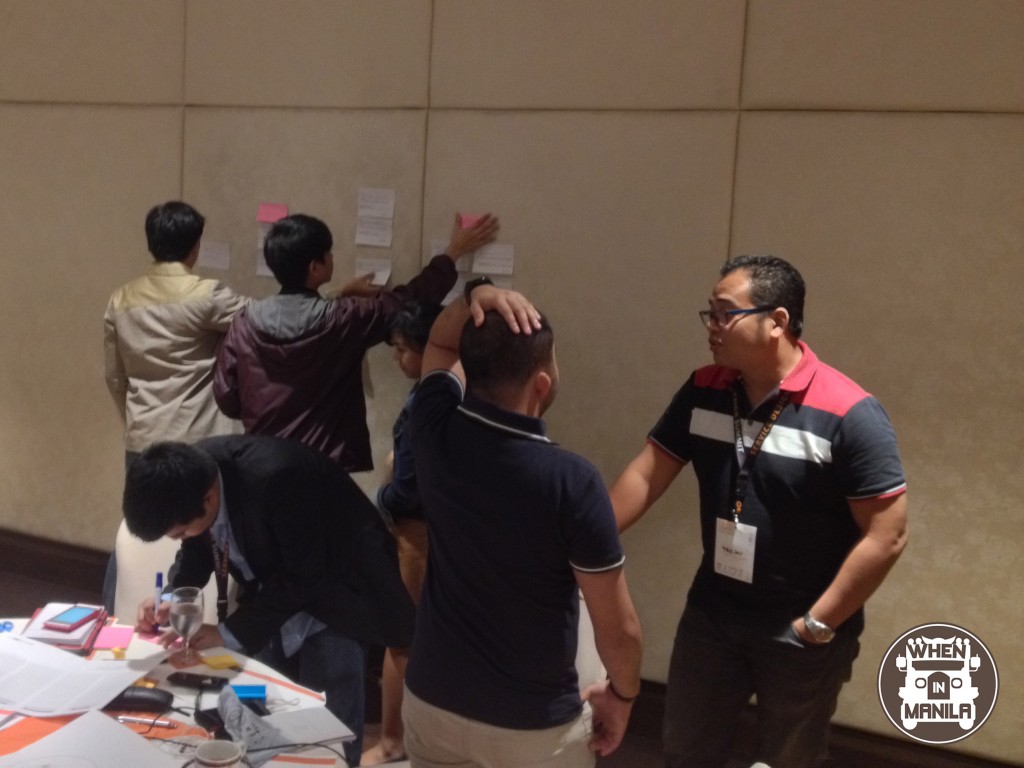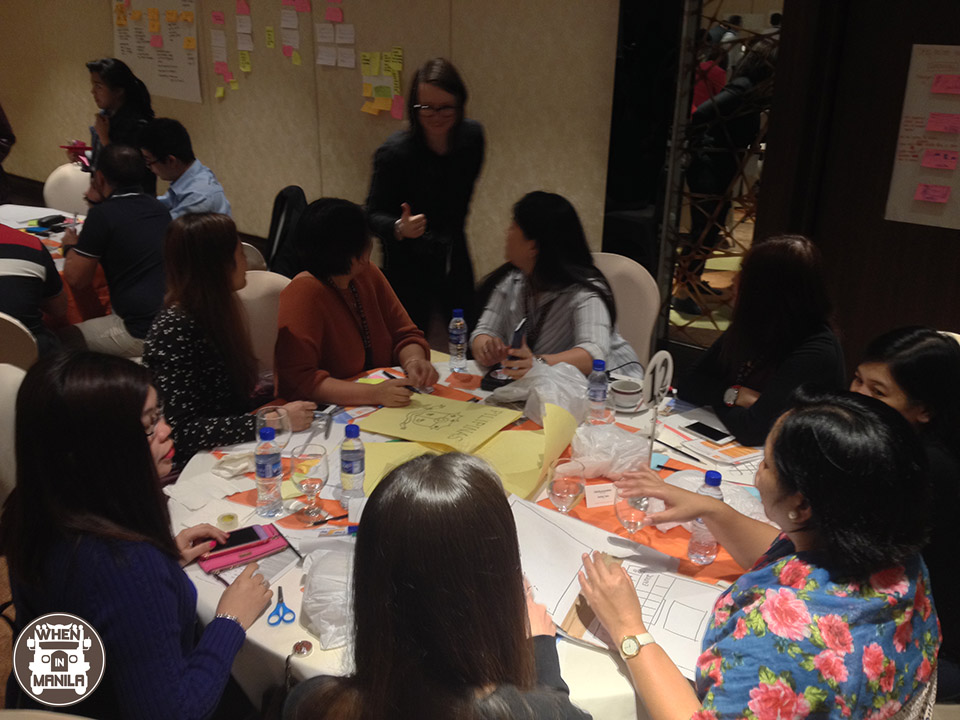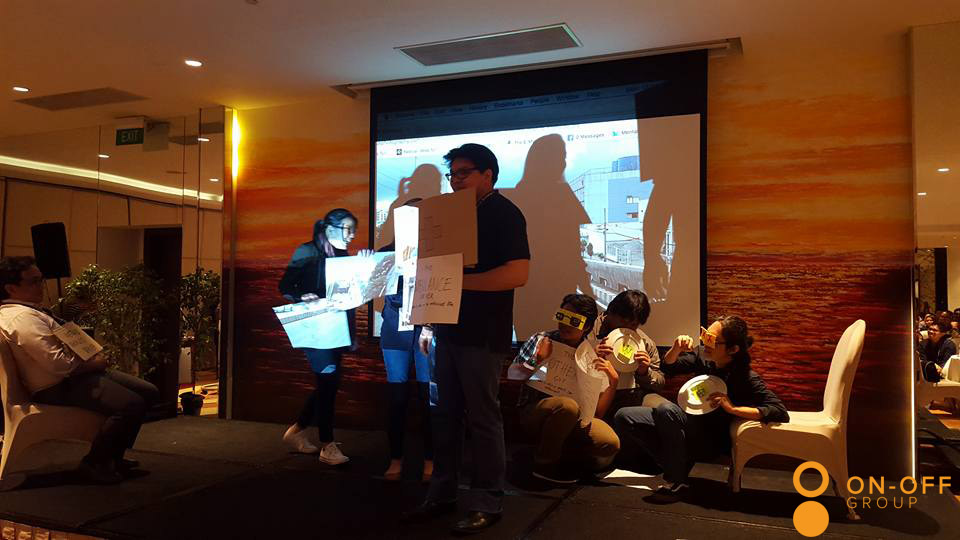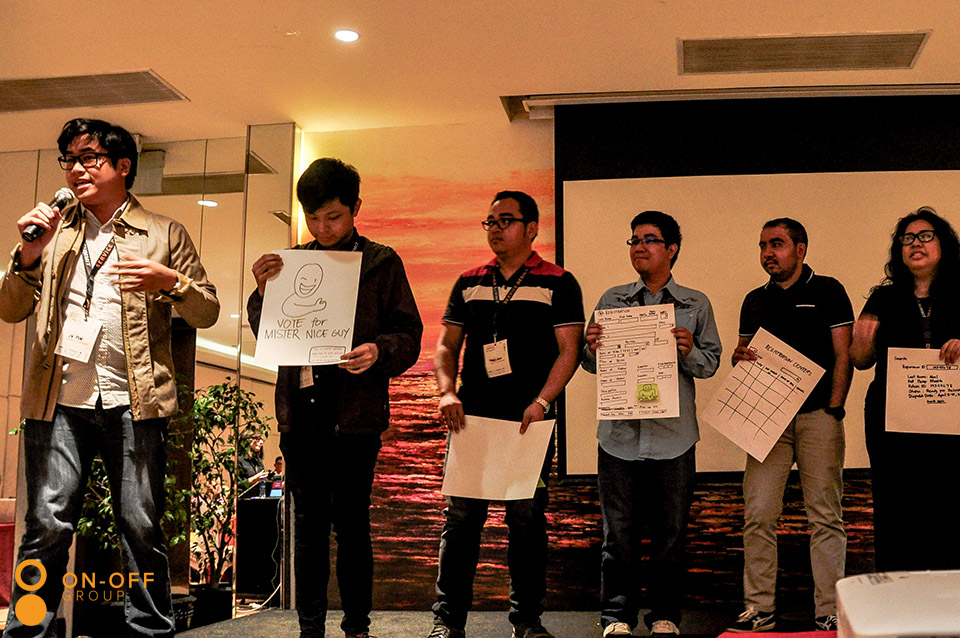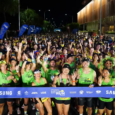Design with Empathy.
This was the main idea highlighted during the Service Design Summit 2016 that was held at Hotel Jen at Pasay earlier this month.
Service design, according to Wikipedia, is a form of conceptual design, which involves the activity of planning and organizing people, infrastructure, communication and material components of a service in order to improve its quality and the interaction between service provider and customers. Based on my understanding from the summit, service design is a method to provide better service strategies, processes or experiences that utilizes quantitative and qualitative information.
On the first day, the keynote speaker, Sarah Drummond, lined up a number of lectures on the different tools, methodologies and, principles of service design. She also prepared activities that engaged the participants to have a crash course on service design.
My takeaway from the activities was fairly simple: we can identify a ton of problems in our society that needs service improvements, but we can also determine a means of solving them.
In our first activity for service design, we were divided into groups and needed to identify problems in our society. Here are some of the problems presented by the participants: the need for better driver education, voter registration, dealing with flood and the MRT. The problems raised were close to home as most Filipinos struggle with these predicaments.
To solidify the issues, we needed to gather information to make our case. Some called up people they know experiencing these difficulties. Others searched information and reactions of citizens over the Internet. Some even went the extra mile (figuratively and literally), and interviewed strangers outside the venue.
We then proceeded to point out scenarios that people go through and analyze the different services for the problems. We called it a journey map. In this map, we identified things that are already working, not working and needed improvement. We also built personas that will be using the service.
With this done, we gained different perspectives on how individuals use the present services. Different circumstances may lead them to fail and never use the system again. Economic status may pose difficulties of accessing the services. Culture, upbringing and even temperaments play a role on how different individuals perceive existing services. By empathizing with the users, we can determine pain points where services failed, existing process that made the user happy and, their goals why they are using the service.
After that the fun part started. We were given supplies (just what you would see on Art Attack) and were charged to devise solutions by drawing a storyboard and showing how to improve the services. Then we had to present the solutions by pitching it to an audience.
I was very impressed by all of the groups because with a short span of time, they were able to come up with solutions that really made sense.
Going back to our examples earlier, a solution presented for better drivers’ education was to try to change drivers’ mindsets about the importance of road safety. A short course needed to be taken before reacquiring your license. For the problem with the flood, an app was devised so that people can find alternative routes, evacuation shelters, food and medicine.
The day ended by leaving the participants empowered. We had a sense of hope that the solutions we came up, whether feasible or not, can drastically improve the services in our country.
Read on for the second day!

